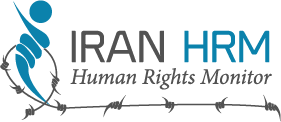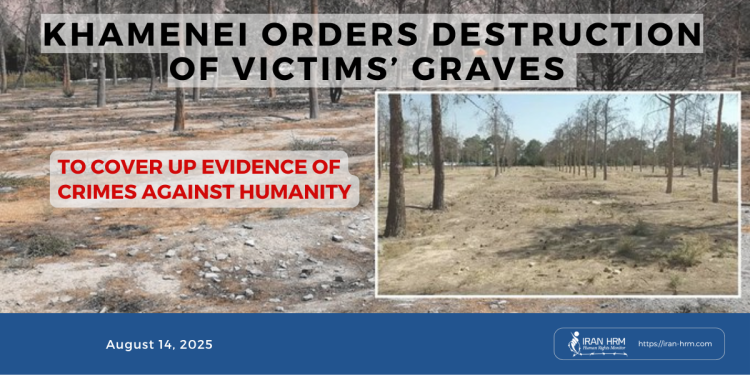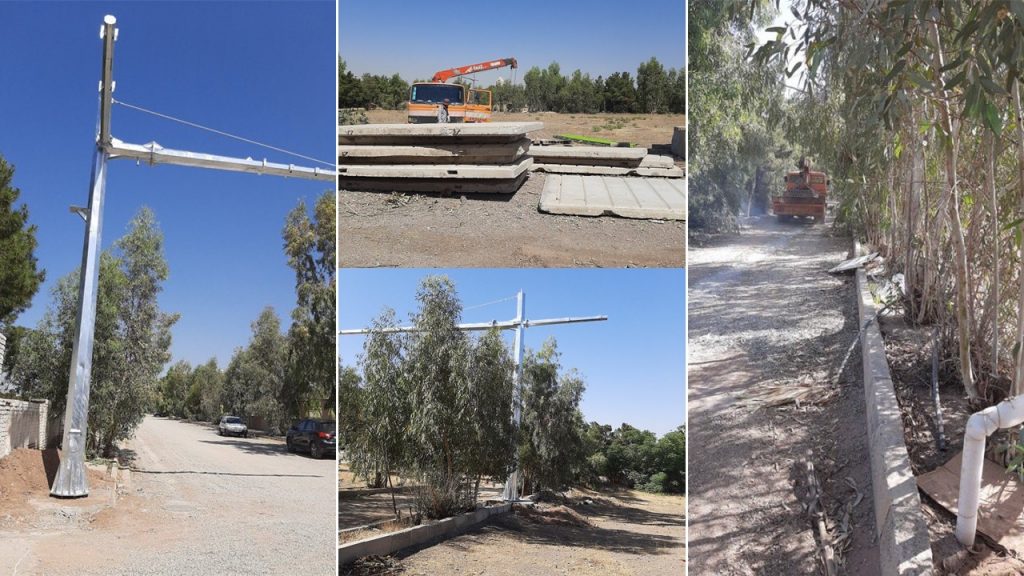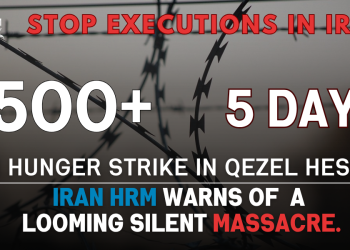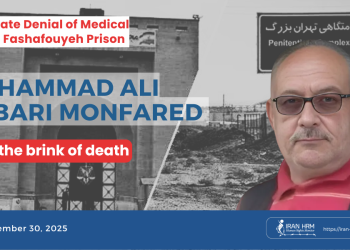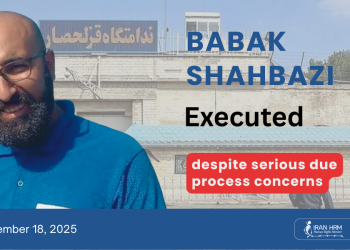August 11, 2025 – Tehran: Acting under direct orders from Ali Khamenei, the Iranian regime has used heavy machinery to demolish and flatten graves in Section 41 of Behesht Zahra Cemetery – the burial site of thousands of political prisoners executed during the 1980s. Agents of the Ministry of Intelligence and security forces were deployed to the site to block families and members of the public. This act is the latest in a four-decade-long policy to erase the physical evidence of organized crimes against humanity.
On 19 August 2025, Tehran’s Deputy Mayor, Davoud Goudarzi, openly confirmed that Section 41 of Behesht-e Zahra Cemetery—one of the burial grounds of political prisoners executed in the 1980s—has been demolished and converted into a parking lot. Telegram: View @yjcnewschannel
Explaining the decision, Goudarzi said that since Section 42 was frequently used by visitors, “we proposed to the custodians and the Supply Council that Section 41, which had been left abandoned, be turned into a parking lot. We received permission and carried out the project.”
Just days earlier, on 16 August 2025, Mohammad Javad Tajik, CEO of Behesht-e Zahra Cemetery, also confirmed to the state-run Shargh Daily that Section 41—where many members of the opposition group People’s Mojahedin Organisation of Iran (PMOI/MEK) were buried—had been flattened and converted into a parking lot. In response to a question from the reporter, Tajik explicitly acknowledged: “Yes, that section too was levelled and turned into a parking lot.”
Background and Significance of Section 41
Since the early 1980s, Section 41 of Behesht Zahra has been known as a mass burial site for executed political prisoners. Independent investigations have estimated its capacity at no less than 9,500 graves. For many families, especially those of members of the People’s Mojahedin Organization of Iran (PMOI/MEK), this site is a symbol of resistance and sacrifice. From the outset, the regime’s security forces placed the section under tight control, restricted access, smashed gravestones, and defaced them with tar or paint. Some parts of the section had previously been destroyed or repurposed, but the latest operation marks an unprecedented and deliberate attempt to obliterate the site entirely.
Timeline of Destruction Efforts
- Early 1980s: Security control begins; gravestones broken.
- 2005–2007: 3,500 square meters of the section removed and converted into a parking lot.
- 2003–2017: Repeated destruction, repurposing, and deliberate neglect to accelerate decay.
- April 2021: Reports of new graves dug in Khavaran, raising fears of similar actions in Section 41.
- August 11, 2025: Complete flattening of Section 41 by bulldozers under security protection.
Methods of Erasure and Destruction
- Breaking and removing gravestones to eliminate burial markers.
- Pouring tar or thick oil-based paint to make inscriptions illegible.
- Flattening the ground with bulldozers and repurpose parts of the land for parking.
- Burning vegetation and deliberately cutting down trees to erase natural markers.
- Withholding maintenance and cleaning to create a derelict, abandoned appearance.
- Permanent security presence to prevent any marking or commemoration.
Human Rights Implications
- The families’ right to know the truth and the burial location of their loved ones has been systematically violated.
- The right to mourn and hold memorials has been criminalized, with gatherings broken up under threat.
- The destruction of graves forms part of a continuous enforced disappearance, which, under international law, constitutes a crime with no statute of limitations.
- These actions deliberately target collective memory and serve as psychological warfare against survivors.
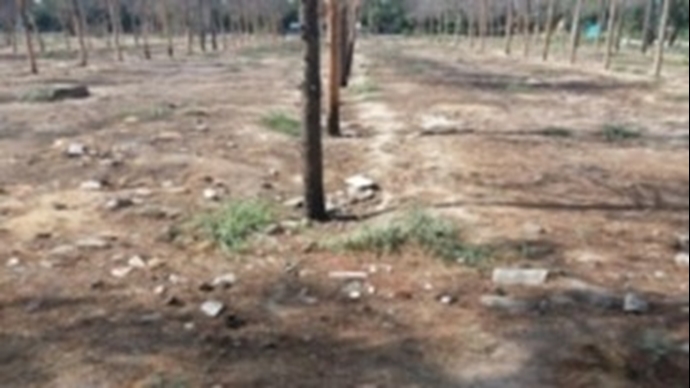 Legal Analysis
Legal Analysis
Under Article 7 of the Rome Statute, destroying evidence of crimes against humanity and preventing commemoration is considered part of the crime itself.
The International Covenant on Civil and Political Rights (ICCPR), Articles 18 and 19, protects freedom of religion, belief, and expression -including the right to hold memorials.
The International Convention for the Protection of All Persons from Enforced Disappearance recognizes such destruction as part of a continuing crime, not subject to any statute of limitations.
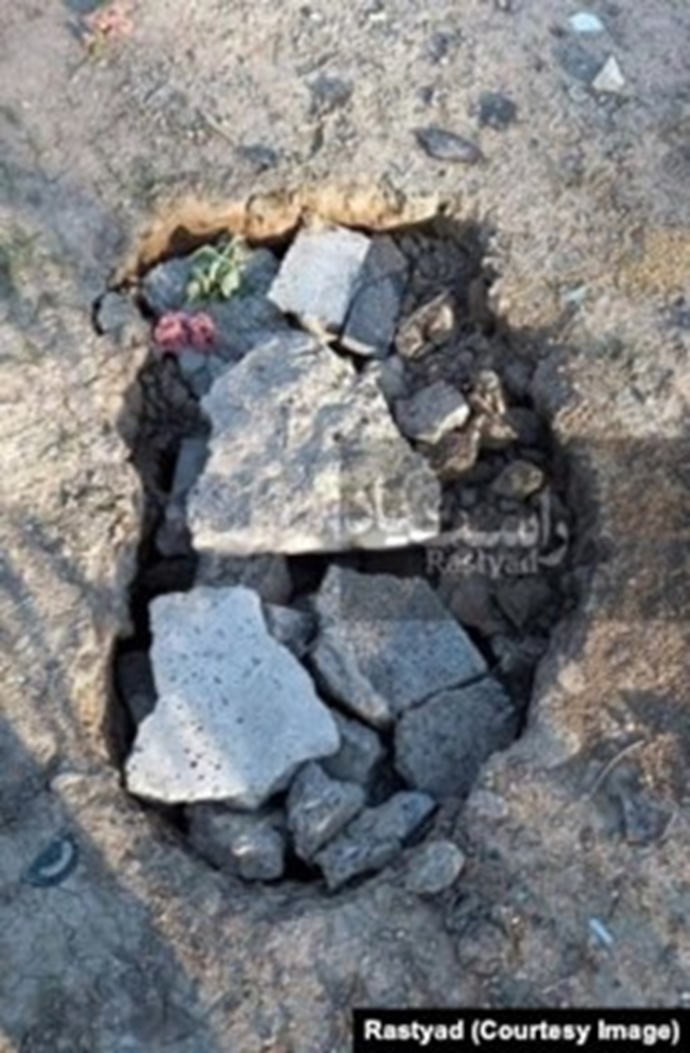 Findings of Professor Javaid Rehman
Findings of Professor Javaid Rehman
In his reports, Professor Javaid Rehman, former UN Special Rapporteur on the situation of human rights in Iran, has highlighted the destruction of cemeteries – particularly Section 41 of Behesht Zahra and Khavaran Cemetery – as part of the “atrocity crimes” and grave human rights violations committed by the mullahs’ regime.
In his July 2024 report, he described the 1988 political executions as “crimes against humanity” and “ongoing genocide,” stressing that Iranian authorities have systematically and deliberately concealed or destroyed key evidence, including the destruction and flattening of mass grave sites across the country.
Regarding Khavaran, Professor Javaid Rehman reported that in May 2022, authorities installed large concrete walls and surveillance cameras in the cemetery. These measures were intended to restrict access and facilitate the destruction of evidence. There are also reports that members of the Baha’i community were forced to bury their dead in the Khavaran mass grave area, further complicating the site’s legal status and potentially obscuring evidence of those buried there in 1988.
Families of victims and human rights activists, including Mansoureh Behkish, have met directly with Professor Javaid Rehman and submitted a petition regarding the destruction of Khavaran, urging him to include this issue in his official UN reports.
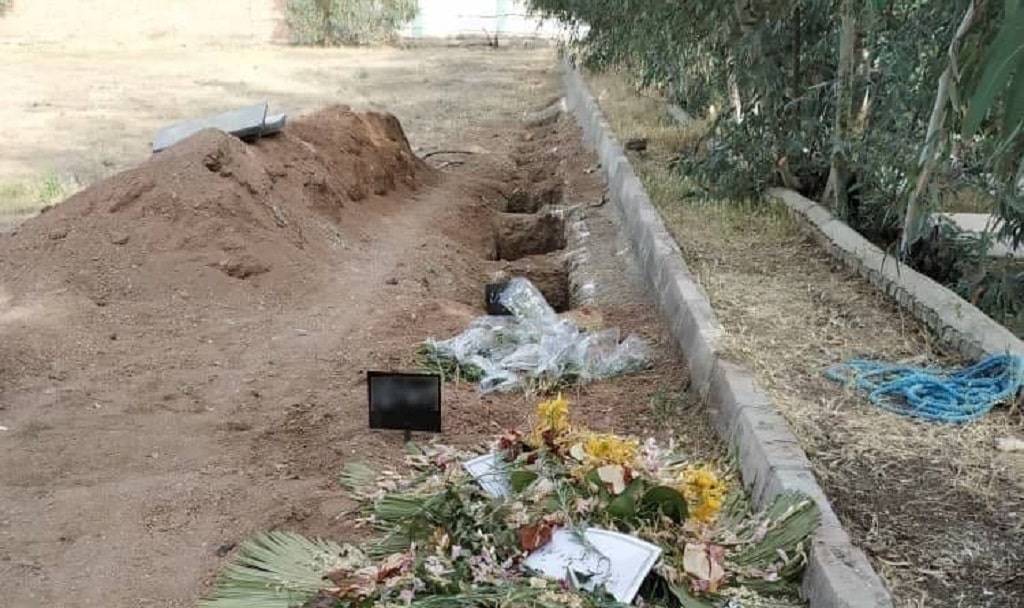
Professor Rehman has repeatedly emphasized that many perpetrators of these crimes remain in positions of power and has called on UN member states to use universal jurisdiction to investigate, issue arrest warrants for, and prosecute those involved.
Conclusion and Call to Action
The destruction of Section 41 of Behesht Zahra is not an isolated or merely administrative act; it is part of a long-standing policy to erase evidence of major crimes against humanity. The international community must condemn this act and use the tools of international law to halt it.
We urge:
- The immediate launch of an independent international investigation.
- An immediate halt to all destruction and guaranteed free access for families to burial sites.
- The use of universal jurisdiction to prosecute those responsible for these crimes.
